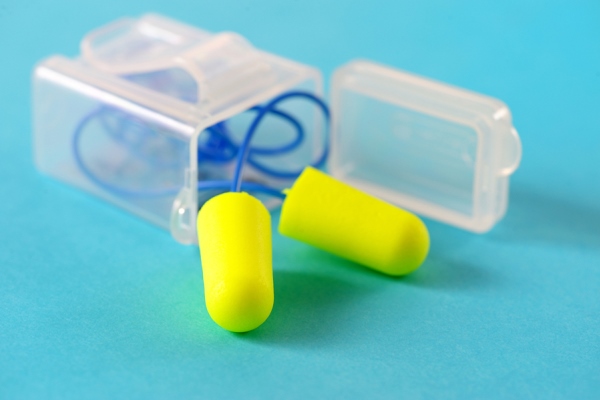Hearing Safety

Noise is unwanted sound. It can have different effects on you.
Psychological effects mean that noise can startle you, annoy you, and disrupt your concentration.
Noise can interfere with your communications when you are talking to someone. As a consequence, it interferes with your job performance and your safety.
Physiological effects mean that you can lose your hearing. Noise can cause pain and even nausea when the exposure is severe.
Ear protectors, in effect, reduce noise levels at the inner ear. Ear protection is particularly important when noise exposures cannot be controlled adequately by environmental changes.
Ear protectors may be either ear plugs or ear muffs.
Many times workers resist wearing hearing protection more than any other type of personal equipment. One of the most common reasons that they give is that they don't think they really need it. But hearing loss is so gradual, even in intense exposures, that by the time you realize that you can't hear as well as you used to, the damage has been done and can't be reversed.
Another common reason workers give for not wearing hearing protectors is that they are uncomfortable. Evidence of this attitude can be found in such practices as springing muffs so they don't seal against the head, clipping off the inner end of plugs and leaving only the outer end tab to fool the supervisor, and indifferent molding and insertion of malleable-type plug materials.
Good protection depends on a good seal between the surface of the skin and the surface of the ear protector. A very small leak can destroy the effectiveness of the protection. Protectors have a tendency to work loose as a result of talking, chewing, etc., and they must be reseated from time to time during the workday.
Some initial discomfort is sometimes experienced in obtaining a good seal.
There will be no adverse reactions as a result of the use of ear protectors if they are kept reasonably clean. Ear plugs should be made of soft material such as neoprene, as hard fixed material can injure the canal. Skin irritations, injured ear drums, or other harmful reactions are exceedingly rare. A properly designed, well-fitted and clear ear protector will cause no more difficulty than a pair of safety goggles.
The use of ear protection will not make it more difficult to understand speech or to hear warning signals when worn in a noisy environment.
Most of the available ear protectors, when correctly fitted, provide about the same amount of protection. The best ear protector, therefore, is the one that you can wear properly.
Three factors may be used to determine the level of noise:
1. If it is necessary for you to speak in a very loud noise or shout directly into the ear of a person in order to be understood, it is likely that the exposure limit for noise is being exceeded.
2. If you have heard noises and ringing noises in your ears at the end of the work day, you are being exposed to too much noise.
3. If speech or music sounds muffled to you after leaving work, but sounds fairly clear in the morning when you return to work, there is no doubt about your being exposed to noise levels that can eventually cause a partial loss of hearing that can be permanent.
If any of these conditions exist, a safety professional, using a sound level meter, should measure the noise level at various work areas. They can then determine whether the exposure is great enough to require personal protection.
